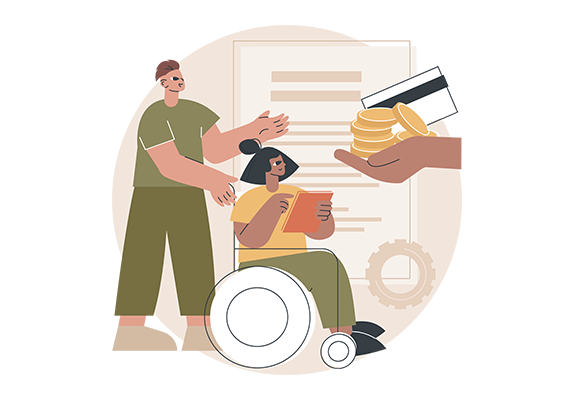
Disability insurance is a crucial financial tool designed to provide income protection in the event that an individual becomes disabled and is unable to work. It offers a safety net by replacing a portion of the individual’s lost income, helping them meet their financial obligations and maintain their standard of living during a period of disability. Disability insurance policies vary in terms of coverage, waiting periods, and benefit periods, allowing individuals to choose a plan that aligns with their specific needs and circumstances.
Disability insurance serves as a vital lifeline, offering financial security and peace of mind in times of uncertainty, whether the disability is caused by an illness or injury. Both short-term and long-term disability insurance provides coverage and ensures individuals are supported when their ability to work is impacted for an extended period. By replacing a portion of the lost income, disability insurance helps individuals meet their financial obligations and maintain their standard of living during these challenging times. Regardless of the cause or duration of the disability, having disability insurance provides a crucial safety net, ensuring financial stability and providing a sense of reassurance for the insured individual.
Disability insurance is a type of policy that provides financial protection to those who become disabled and are unable to work. It can be a crucial safety net for individuals who rely on their income to support themselves and their families. However, not all disability insurance policies are created equal. Therefore, it is essential to consider several factors when selecting the best disability insurance policy for your needs.
- Coverage Amount
The coverage amount is the maximum amount that the insurance company will pay if you become disabled and cannot work. It is crucial to choose a policy that provides adequate coverage to meet your financial needs. The coverage amount should be sufficient to cover your essential living expenses, such as rent or mortgage payments, food, and utilities. It is recommended that you select a policy that covers at least 60% of your pre-tax income.
- Waiting Period
The waiting period is the time between when you become disabled and when the insurance payments begin. The waiting period can range from a few days to several months. Policies with shorter waiting periods are generally more expensive than those with longer waiting periods. Therefore, it is essential to balance the cost of the policy with the waiting period to ensure that you can afford the premiums and still receive benefits when you need them.
- Benefit Period
The benefit period is the length of time that the insurance company will pay benefits if you become disabled and cannot work. It can range from a few years to the rest of your life. Policies with longer benefit periods are generally more expensive than those with shorter benefit periods. Therefore, it is essential to consider your financial needs and how long you would need to receive benefits if you became disabled.
- Definition of Disability
The definition of disability is how the insurance company determines if you are eligible for benefits. Some policies have a more liberal definition of disability, while others have a more restrictive definition. It is crucial to select a policy with a liberal definition of disability to increase your chances of receiving benefits if you become disabled.
- Premiums
The premiums are the amount that you pay for the disability insurance policy. It is essential to select a policy that you can afford to pay over the long term. Premiums can vary based on several factors, such as age, health, occupation, and the amount of coverage. Therefore, it is crucial to shop around and compare policies from different insurance companies to find the best coverage at an affordable price.
- Exclusions
Exclusions are situations or conditions that are not covered by the disability insurance policy. For example, some policies may exclude coverage for disabilities caused by pre-existing conditions or self-inflicted injuries. It is essential to read the policy carefully to understand what is and is not covered to avoid any surprises if you need to make a claim.
- Riders
Riders are additional benefits that can be added to a disability insurance policy for an extra cost. For example, a cost-of-living adjustment rider can help your benefits keep pace with inflation. A residual disability rider can provide benefits if you can work but earn less than before due to a disability. It is essential to consider riders that can provide additional protection and tailor the policy to your specific needs.
Conclusion
Choosing the best disability insurance policy requires careful consideration of several factors. It is essential to select a policy with adequate coverage, a reasonable waiting period, and a liberal definition of disability. Premiums, exclusions, and riders should also be considered when selecting a policy. By taking the time to research and compare policies, you can find the best disability insurance policy to meet your needs and provide financial protection in case you become disabled.

